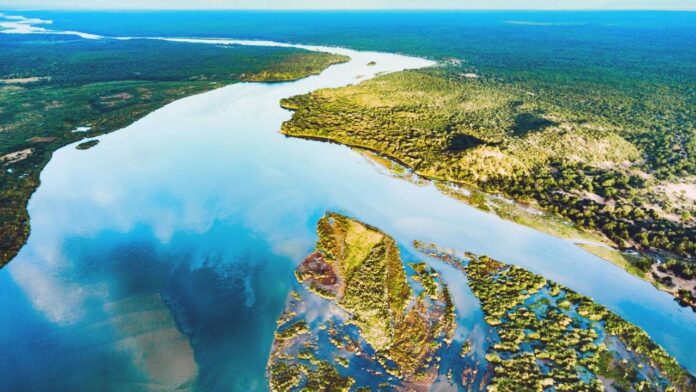According to a study, at least 23 million people worldwide live on floodplains affected by potentially hazardous quantities of toxic waste from metal-mining operations.
The extent of contamination from the world’s 22,609 active and 159,735 abandoned metal mines was calculated by UK experts.
Chemicals from mining operations can seep into the soil and waterways.
According to the experts, future mines must be “very carefully planned.”
This is especially important as demand for metals that will underpin battery technology and electrification, such as lithium and copper, rises, according to Prof Mark Macklin of the University of Lincoln, who led the research.
The Global Distribution of Active and Dormant Metal Mines
“We’ve known about this for a long time,” he said to BBC News. “What concerns me is the legacy – [pollution from abandoned mines] continues to affect millions of people.”
The findings, published in the journal Science, draw on the team’s earlier research into how mining contamination flows and accumulates in the ecosystem.
The scientists collated mining activity data from throughout the world that had been provided by governments, mining companies, and organizations such as the US Geological Survey. This information includes the location of each mine, the metal extracted, and whether it was operational or abandoned.
Prof Macklin highlighted that the majority of metals extracted from mines are locked up in ground sediment. “This material, eroded from mine waste tips or contaminated soil, ends up in river channels or [can be] deposited over a flood-plain.” Additionally, you can also read about- Earth Tremors Mystery Solved: Scientists Make Breakthrough in Understanding
Prof Macklin and his colleagues used previously published field and laboratory tests to determine how far down river systems this metal-contaminated sediment travels.
With this information, the scientists were able to create a computer model that could calculate the extent of river channels and floodplains around the world that are polluted by mining waste from both current and previous mining activities.
“We mapped the area that’s likely to be affected, which, when combined with population data, shows that 23 million people worldwide are living on ‘contaminated’ ground,” said Chris Thomas, a professor of water and planetary health at the University of Lincoln.
“Whether those people will be affected by that contamination, we simply can’t tell with this research, and there are many ways that people may be exposed,” he underlined. “But there is agriculture and irrigation in many of those areas.”
Crops produced on contaminated soils or irrigated with mine waste-contaminated water have been shown to have significant levels of metals.
“Animals grazing on flood-plains may also eat contaminated plant material and sediment, especially after flooding, when fresh metal-rich sediment is deposited,” the researchers wrote in their report.
“With climate change and more frequent floods,” Prof Macklin continues, “this legacy [pollution] is going to extend and expand.”
Prof Jamie Woodward of the University of Manchester, who was not involved in the research, said it underscored the dangers posed by “silent pollution” accumulated in floodplains.
“A lot of river monitoring is focused on water, but the real ‘nasties’ are frequently associated with river sediments,” he told.
Read More: Deadliest Natural Disasters in History: Top 10 Catastrophic Events that Changed the World
“We need to learn more about how contaminants move through the environment and where they are stored.” This enables us to analyze risks and mitigate against them. Flood-plain grasslands that have been heavily contaminated, for example, should not be used for cattle grazing.”
According to the experts, metal mining is “humankind’s earliest and most persistent form of environmental contamination.” Mining waste began contaminating river systems as early as 7,000 years ago.


















![10 Countries With the Best Healthcare in the World [Statistical Analysis] Countries With the Best Healthcare in the World](https://articleify.com/wp-content/uploads/2025/07/Countries-With-the-Best-Healthcare-in-the-World-1-150x150.jpg)










